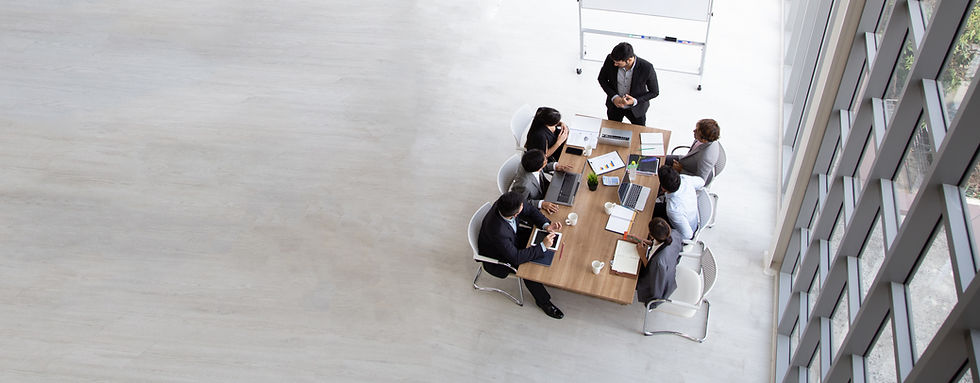What If We Treated Visual Stimuli and Input Consumption with the Same Importance as Nutrition?
- MA Emma Kocmanek Dikyova, DipArt

- May 30
- 4 min read
Imagine if we scrutinized our visual environment and daily media intake with the same care and intentionality as we do our meals. Just as we count calories, avoid processed junk, and strive for balanced nutrition, what if we became equally conscious of the visual diet we feed our minds every day?
This thought experiment opens up a radical shift in how we think about health—not just physical, but also mental, emotional, and even spiritual. In a world saturated with screens, social media, and constant noise, the things we see aren’t just background stimuli—they are shaping our mental health, self-esteem, and overall wellbeing every moment.
Welcome to a new era of intentional living—one rooted in Life Philosophy Design, where your personal values, visual environment, and daily inputs are aligned by choice, not default.
The Visual Diet: What Are You Consuming?
Imagine if your media feed was labeled like food:
"May cause mental bloating," "Empty calories for the soul,” "Artificially flavored with perfection.” “Low self-worth may occur after viewing."
Now that would change how we consume.
We live in an age of nonstop visual consumption. Scroll through Instagram, binge a series, get bombarded by ads, and skim headlines—all before breakfast. Each image we absorb is a form of input. Like food, some images nourish, while others deplete.
Some visuals offer motivation, inspiration, or prompt gratitude. Others feed procrastination, stress, or comparison fatigue. Just as some people use affirmations or a vision board for clarity and focus, you can take a more intentional approach to what you see.
Media Intake and Mental Health
Digital exposure is directly tied to emotional intelligence, burnout, and anxiety. While a motivational quote can give us a boost, it won’t outweigh a flood of fear-based content or perfection-obsessed social media.
Just like poor food choices affect our body, toxic visual input chips away at our mental clarity, resilience, and sense of purpose. Your media diet can influence not only your self-care practices but also how effectively you show up in teamwork, relationships, and personal goals.
How Do We Do This?
This is where Neurodesign comes in—a field that blends neuroscience, psychology, and design to understand how visual elements affect the brain and behavior. It’s a powerful tool for anyone crafting a more supportive, life-enhancing environment.
I once worked with a client—let’s call her Anna—who was stuck in a loop of low self-esteem, high procrastination, and chronic screen fatigue. No matter how many affirmations or vision boards we created, she felt like she was always three steps behind. When we reviewed her day, it became clear: Anna was devouring hours of hyper-stimulating, anxiety-inducing content.
Her visual diet was essentially fast food for the brain: high in dopamine hits, low in depth.
Visual Mindfulness in Practice
Adopting a nutrition-style model for input creates clarity and balance. Here’s how:
Whole Visuals vs. Processed Visuals
“Whole visuals” include nature scenes, candid moments, and artistic expression. “Processed visuals” may include digitally altered images, violent content, or hyper-stimulating ads.
Visual Fasting
Similar to intermittent fasting for physical health, periodic breaks from screens help reset your nervous system and improve your adaptability and innovation capacity.
Curated Visual Diets
Just as we prep nourishing meals, we can design intentional digital spaces—following content that promotes a growth mindset, emotional awareness, and aligned values. This is Life Philosophy Design in action.
Input Journaling
Track what you see and how it makes you feel. Over time, patterns emerge, giving you insight into triggers, energy drains, and inspirational sources.
Reclaiming Agency and Clarity
Visual consumption is one of the most overlooked influencers on our personal development. You might not be able to filter the world, but you can filter your feed. And that small choice can have outsized impact on your clarity, motivation, and joy.
Tools like affirmations, vision boards, journaling, and working with a life coach or mindset coach help reinforce that awareness. When supported by principles of Neurodesign, your environment becomes more than decoration—it becomes a reflection of your intentional life.
Nutrition for the Mind
What if every image we saw was as carefully chosen as every bite we eat? Would we feel more focused, calm, and aligned? Would our days be filled with more inspiration and less noise?
Treating visual consumption with care isn’t a passing trend. It’s a foundation for emotional resilience, self-awareness, and long-term wellbeing. It’s time to view your screen time, media input, and physical surroundings through the lens of Life Philosophy Design and Neurodesign—because what you see is shaping who you become.
Authenticity, Always
I’m not writing this from a mountaintop of mastery. I still get lost in the scroll. I still watch too much late-night comedy when I should be journaling. But I’ve also seen what happens when we align our input with our values. We become calmer. More creative. More us.
That’s the magic of Life Philosophy Design—it's not a set of rules. It’s a set of choices that reflect your real self, your desired future, and your inner peace.
What You See Shapes Who You Become
If you change what you consume, you change what you believe. And when you change what you believe, you change what’s possible.
This isn’t just a blog post—it’s an invitation. To look at your inputs the way you look at your meals. To nourish your mind with content that feeds your spirit. To be the curator, not the consumer.
Because your visual diet is one of the most powerful forces shaping your wellbeing, your creativity, and your potential.And the best part?
You’re the chef.



Comments